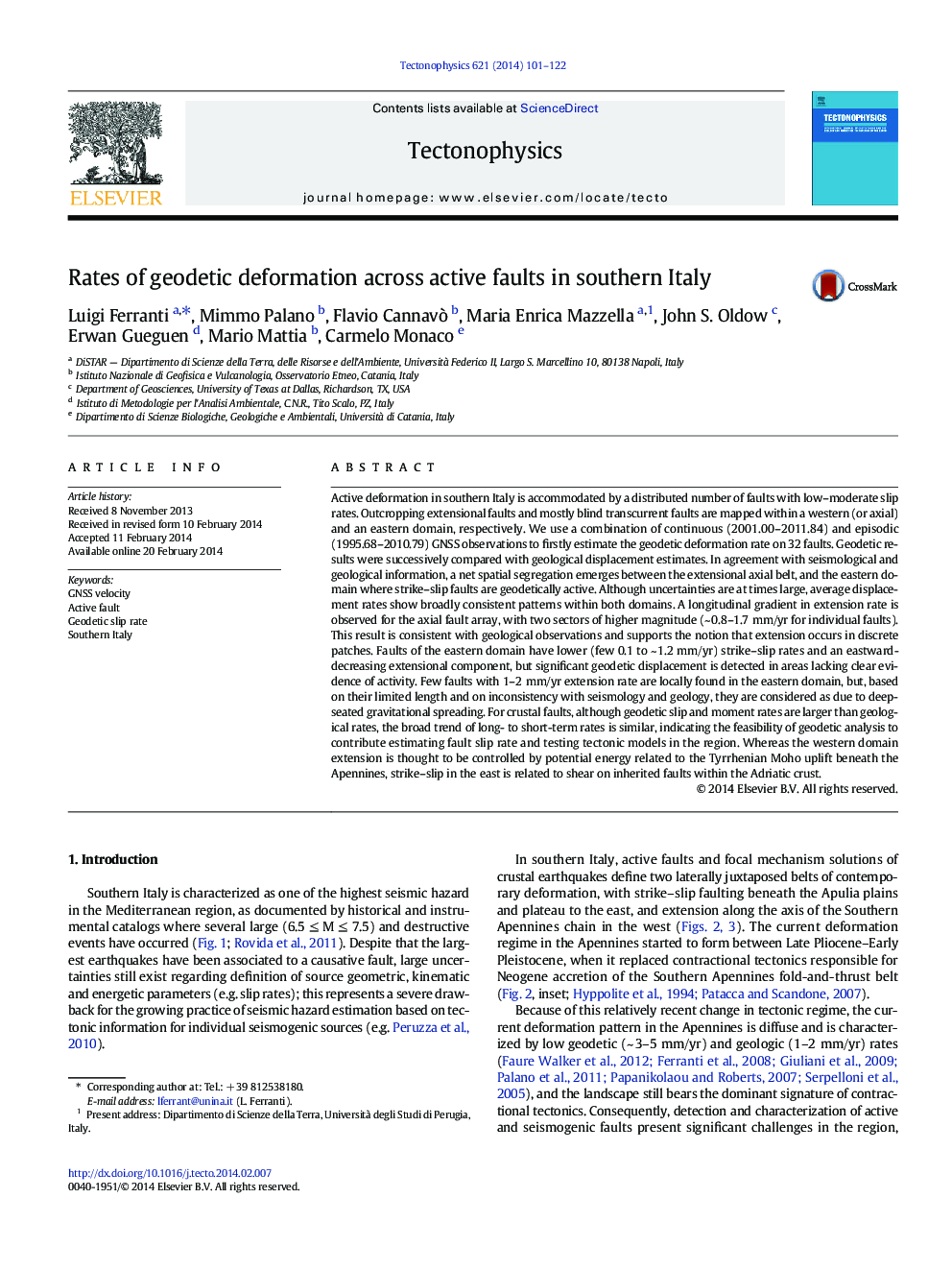| کد مقاله | کد نشریه | سال انتشار | مقاله انگلیسی | نسخه تمام متن |
|---|---|---|---|---|
| 6433861 | 1636769 | 2014 | 22 صفحه PDF | دانلود رایگان |
- We computed the geodetic strain/moment rate across active faults in southern Italy.
- A division exists between a western extensional and an eastern transcurrent domain.
- Slip rates and tectonic domains agree with geological and seismological data.
- Local gravitational normal faults in eastern domain
- This is a contribution to a fault-based assessment of seismic hazard.
Active deformation in southern Italy is accommodated by a distributed number of faults with low-moderate slip rates. Outcropping extensional faults and mostly blind transcurrent faults are mapped within a western (or axial) and an eastern domain, respectively. We use a combination of continuous (2001.00-2011.84) and episodic (1995.68-2010.79) GNSS observations to firstly estimate the geodetic deformation rate on 32 faults. Geodetic results were successively compared with geological displacement estimates. In agreement with seismological and geological information, a net spatial segregation emerges between the extensional axial belt, and the eastern domain where strike-slip faults are geodetically active. Although uncertainties are at times large, average displacement rates show broadly consistent patterns within both domains. A longitudinal gradient in extension rate is observed for the axial fault array, with two sectors of higher magnitude (~Â 0.8-1.7Â mm/yr for individual faults). This result is consistent with geological observations and supports the notion that extension occurs in discrete patches. Faults of the eastern domain have lower (few 0.1 to ~Â 1.2Â mm/yr) strike-slip rates and an eastward-decreasing extensional component, but significant geodetic displacement is detected in areas lacking clear evidence of activity. Few faults with 1-2Â mm/yr extension rate are locally found in the eastern domain, but, based on their limited length and on inconsistency with seismology and geology, they are considered as due to deep-seated gravitational spreading. For crustal faults, although geodetic slip and moment rates are larger than geological rates, the broad trend of long- to short-term rates is similar, indicating the feasibility of geodetic analysis to contribute estimating fault slip rate and testing tectonic models in the region. Whereas the western domain extension is thought to be controlled by potential energy related to the Tyrrhenian Moho uplift beneath the Apennines, strike-slip in the east is related to shear on inherited faults within the Adriatic crust.
Journal: Tectonophysics - Volume 621, 7 May 2014, Pages 101-122
